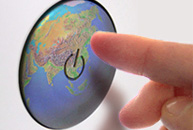Looking for more insights?
Sign up to stay informed about our latest article releases.
The era of cheap food is gone. Rice has been making headlines around the world, and it may continue to do so in the near future. The global trend has peaked: Stocks of food have continued to decline, ever since 2001. That fact, added to constant population growth, means that some regions of the world are going hungry. Experts say that we are not facing a crisis but a new, higher level of prices. “The impact of rising prices can only be traumatic in those third-world countries where they lead to real social disturbances,” they warn.

Sign up to stay informed about our latest article releases.